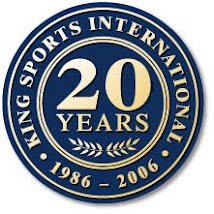I was near the finish line at a high school yesterday watching over 100 thirteen to fourteen year old boys complete a cross country race. As I do everywhere I studied their shape and development.
Apart from the expected changes some were experiencing consistent with entering the early teen age years, there was another noticeable physical sign on many of the boys.
It was apparent to me which of the boys was engaging in body shape changing strength training. Now for most the changes they were making would have been impressive – larger muscles, heavier and potentially stronger than they were or their peers were. This is what would catch the eye of most, and appear impressive.
And I have no doubt in the short term they will experience these benefits and feel rewarded for participating in what is considered normal and appropriate – the application of strength training to young athletes applied with the current paradigms.
However, based on over three decades of stuying the human body’s response to stimuli, and seeking to understand and then be able to predict the relationship between cerain stimuli in training and the incidence and severity of injury, I d did not share that feeling of being impressed.
Quite the opposite actually. I added more numbers to the sample group for the purposes of testing my hypothesis of future injuries patterns for these boys.
What I saw was a potential relationship where over 80% of these boys engaged in what is considered normal practice strength training will suffer injuries during the next few years BECAUSE of their strength training.
The most glaring imbalance I saw in their body was quad dominance, with their quad muscles over-shading lagging hip muscles – hamstrings and glues.
During the 1980s, after identifying muscle imbalance from traditional strength training, I began to develop a concept I called ‘:Lines of movement’. What resulted were six primary divisions or categories of exercise, which I didn’t publish until 1998.
These categories included:
• Hip dominant
• Quad dominant
• Horizontal push
• Horizontal pull
• Vertical push
• Vertical pull
Within a few years this concept was hijacked and published unreferenced by certain ‘writers’ keen to promote their self-interests, rather than the interests of the end-user, for whom it was developed.
Perhaps this is the reason why not only have we failed to fulfill the concept I developed nearly 30 years ago, we are arguably worse off as a society in relation to injuries that I suggest are a direct result of the training we do.
Once I realized the tragic direction the world has been taking in relation to training induced injuries, combined with the unfettered abuse of my concepts for self-serving purposes at the expense of the intended recipients – I have dedicated more time and energy to the purpose of helping people avoid the pitfalls presented by writers who for the most part lack real success in training, yet are ‘teachers’.
I have done a number of seminars throughout the world this year on this subject, and will peak this message at the November 2015 Society for Weight Training Specialists (SWIS) convention in Toronto, Canada – in addition to a number of presentation on this topic in a number of different countries during the remainder of the year.
I can only reach out and seek to warn parents and other care-givers – we need to pull back in the involvement of young athletes in the formal physical preparation program, especially strength training, until training methods and coach competencies are significantly higher.
If you have children in sport, or if you coach young athletes in physical training, I want to say thanks for contributing and look forward to meeting you in a seminar during 2015! The world need you to step up, up-skill and take great pride in ‘first, do no harm!’
Subscribe to:
Post Comments (Atom)




No comments:
Post a Comment